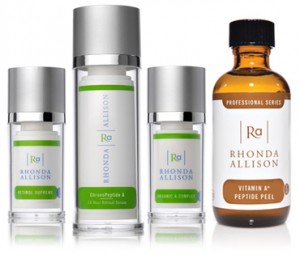vitamin A
In the world of aesthetics vitamin A is most often associated with retinol, but this essential vitamin plays a significant role in several other functions of the body including gene transcription, immune function, bone growth, antioxidant activity and most importantly it enables the retina of the eye to process low-light and color vision. Vitamin A is also of course vital to skin and cellular regeneration.
As essential as this vitamin is, when used in topical applications caution must be used. Having a deeper understanding of its origins, sources and uses will help you enhance the results of your treatments and prescribed home-care regimens.
What It Is
Some reports link the discovery of vitamin A to research conducted in 1906 that found compounds other than carbohydrates, proteins and fats were necessary to keeping cattle healthy. In 1917 researchers at the University of Wisconsin-Madison and Yale University discovered a vitamin A substance.
Nearly 10 years later clinical manifestations of vitamin A deficiencies were discovered, thus initiating the use of the vitamin to treat skin diseases. It was in 1947 when two Dutch chemists first synthesized vitamin A.
By the 1970s science in skin care brought about the use of retinoic acid, a metabolite of vitamin A, to reverse the signs of aging after discovering its benefits through the work of researchers Kligman and Fulton who had originally developed it for acne.
How It Works
Among the most useable forms of vitamin A are retinols, which also include retinal (aldehyde form), retinoic acid (acid form) and retinyl ester (ester form). Retinols in general are the animal form of vitamin A. They can be converted to retinoic acid by the skin where it then becomes active.
The chemical compounds retinal, retinoic acid and retinyl ester are collectively referred to as retinoids. Topical retinoids are beneficial in treating acne and aging skin. In skin rejuvenation, retinoids are used as anti-aging chemicals where vitamin A is absorbed through the skin, increasing the rate of cell turnover and collagen production, creating a more youthful appearance. Retinol also stimulates the new growth of tiny blood vessels, which improves circulation, increasing the oxygen supply to the skin and giving the skin a healthy glow. These characteristics make it effective in treating sun-induced wrinkles, pigmentation associated with aging skin, normalizing keratinization, and increasing enzyme activity.
Where to Find It
Vitamin A is found in two primary forms in food: retinol, the form absorbed when eating animal food sources, and carotenes, namely beta-carotene. The latter requires an enzyme in the body to convert the compound to retinal. The vitamin can be found in a variety of foods including meat sources, dandelion greens, carrots, broccoli, sweet potatoes, kale, spinach and pumpkin, to name a few.
In cosmeceuticals, vitamin A can be found in a variety of strengths in creams, serums, acids and enzymes. When blended with other ingredients such as skin-building organic stem cells, peptides, micro algae, or lactic acid the formula offers a more gentle approach to the regenerating benefits of retinol while providing hydration and skin strengthening. When combined with ingredients like salicylic acid the exfoliation and regenerating properties are enhanced.
Vitamin A also appears in the form of retinyl palmitate, or vitamin A palmitate, the precursor to retinol. It provides gradual non-irritating skin resurfacing, reduces wrinkles and smoothes skin texture improving the signs of aging, and promotes collagen synthesis. You can find vitamin A in Rhonda Allison’s Organic A Complex, Retinol Supreme, our new ChronoPeptide A, and Vitamin A+ Peptide Peel.
While vitamin A proves essential in skin rejuvenation and correcting acne, it should not be used when skin is exposed to the sun. Retinoid products are better used at night, when degradation by light is minimal. Be sure to educate clients on best practices when using retinols.
When used properly, this time-tested ingredient will prove a necessary component in your skincare toolbox. Not only is it effective in treating acne, it also enhances the re-youth process when rejuvenation is the goal.